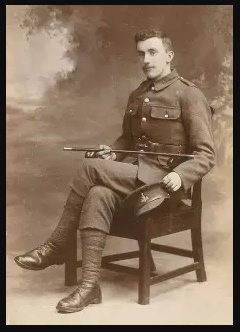Name: John Thomas Barker
Rank: Lance Corporal
Service No: 203462
Date of Death: 14/09/1916
Age: 18
Regiment/Service: York and Lancaster Regiment 1st/4th Bn.
Grave Reference: C. 13. Cemetery: Caudry Old Communal Cemetery
Additional Information: son of John Thompson Barker and Ann Barker, of 59 Caledonia St, Scarborough.
Paul Allen writes:
Bearing in mind that during the Great War a typical battalion of infantry had consisted of around one thousand all ranks, between 1 – 25 September 1916 the 1st/4th York and Lancaster Regiment lost 21 officers and 731 other ranks killed, wounded, and missing. Amongst them was: 203462 Lance Corporal John Thomas Barker.
‘Jack’ Barker was born in the village of Hutton Buscel during 1898 and was the only son of John Thompson [1] and Ann (formerly Robinson) Barker. Living in Scarborough at 59 Caledonia Street by the outbreak of war, Jack enlisted in Scarborough into the 2nd/5th Battalion of the Yorkshire Regiment (Regimental Number 2429) at the start of hostilities and followed much the same military pathway as Lance Corporal Gray throughout the remainder of his short life.
Listed as missing in action in a casualty list that was included in ‘The Scarborough Mercury’ of Friday, 6 October 1916, Jack Barker was eventually recorded as having been killed in action during Thursday, 14 September 1916. However, further research by the author indicates that he had possibly been wounded and taken prisoner at an earlier date due to the fact that the 18-year-old soldier’s remains were interred some distance from the Somme Sector in a cemetery that was been used by various German Medical Units from 1914 until virtually the end of the war.
Jack’s final resting place is located in Section C, Grave 13, in Caudry Old Communal Cemetery, which is located in Northern France in the town of Caudry, some 13 kilometres to the east of the city of Cambrai.
[1] Interestingly, Jack’s 40-year-old, ex-Grenadier Guardsman father, John Thompson Barker, also enlisted into the Yorkshire Regiment.
Paul Allen

